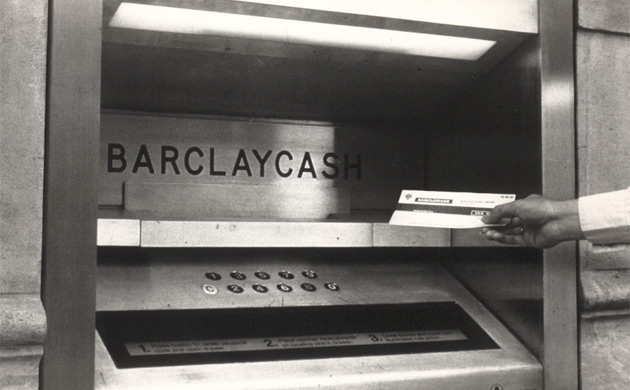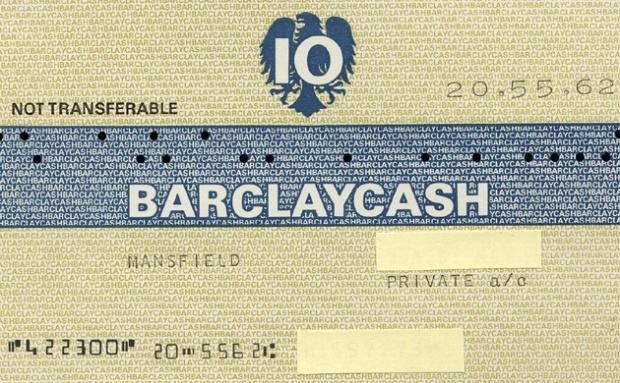The first ATM appeared in 1967 in Barclays
Almost 50 years ago, Barclays opened the first cash dispenser at Enfield in north London. The ATM did not accept plastic cards, but paper vouchers. The issuance of funds was limited to 10 pounds.

The ATM, or Automated Teller Machine, was created by Scottish John Shephard-Barron. The inventor somehow could not withdraw money from his account due to the fact that the bank branch was closed. The creation of an ATM Shepard-Barron was inspired by a vending machine with chocolates: that's just instead of sweets in such a machine should have been money.
In 2005, John Shepard-Barron received the Order of the British Empire. A year later, another inventor, engineer James Goodfellow, received the same award as the creator of the PIN.
')
Actor Reg Verny took part in an advertising campaign - he was the first who tried the car on himself.

In order to receive money, it was necessary to use paper vouchers issued at the bank. The limit for the issuance of 10 pounds at that time would be enough to have a great weekend. An element impregnated with Carbon-14, a weakly radioactive isotope, was embedded in the voucher. This element carried information about the PIN code that the customer entered using the keyboard.

Now the number of ATMs in the world is very difficult to calculate - they are in the most remote corners of the planet. For Russia, such statistics is also not available, but you can see the rating of banks by the number of ATMs in the country as of January 1, 2013. At the beginning of 2012, Russia occupied the leading position in Europe - 1.3 units in the number of these cars per 1000 people, in the UK this figure is 0.8, and in Sweden - 0.38. There are ATMs even at the South Pole (photo below).



The ATM, or Automated Teller Machine, was created by Scottish John Shephard-Barron. The inventor somehow could not withdraw money from his account due to the fact that the bank branch was closed. The creation of an ATM Shepard-Barron was inspired by a vending machine with chocolates: that's just instead of sweets in such a machine should have been money.
In 2005, John Shepard-Barron received the Order of the British Empire. A year later, another inventor, engineer James Goodfellow, received the same award as the creator of the PIN.
')
Actor Reg Verny took part in an advertising campaign - he was the first who tried the car on himself.

In order to receive money, it was necessary to use paper vouchers issued at the bank. The limit for the issuance of 10 pounds at that time would be enough to have a great weekend. An element impregnated with Carbon-14, a weakly radioactive isotope, was embedded in the voucher. This element carried information about the PIN code that the customer entered using the keyboard.

Now the number of ATMs in the world is very difficult to calculate - they are in the most remote corners of the planet. For Russia, such statistics is also not available, but you can see the rating of banks by the number of ATMs in the country as of January 1, 2013. At the beginning of 2012, Russia occupied the leading position in Europe - 1.3 units in the number of these cars per 1000 people, in the UK this figure is 0.8, and in Sweden - 0.38. There are ATMs even at the South Pole (photo below).


Source: https://habr.com/ru/post/363269/
All Articles